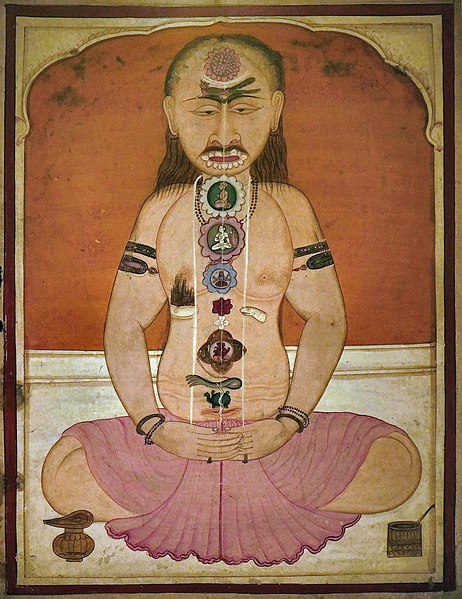Nāḍī is a term for the channels through which, in traditional Indian medicine and spiritual theory, the energies such as prana of the physical body, the subtle body and the causal body are said to flow. Within this philosophical framework, the nadis are said to connect at special points of intensity, the chakras. All nadis are said to originate from one of two centres; the heart and the kanda, the latter being an egg-shaped bulb in the pelvic area, just below the navel. The three principal nadis run from the base of the spine to the head, and are the ida on the left, the sushumna in the centre, and the pingala on the right. Ultimately the goal is to unblock these nadis to bring liberation.

The Varaha Upanishad (13–16 cc. CE) further describes it as follows:"The nāḍis penetrate the body from the soles of the feet to the crown of the head. In them is prāṇa, the breath of life and in that life abides Ātman, which is the abode of Shakti, creatrix of the animate and inanimate worlds." (VU 54/5)
Manuscript painting of a yogin in meditation, showing the chakras and the three main channels (nadis) of the subtle body. A small serpent, symbolising the Kundalini, climbs up the central sushumna channel; she will pierce each chakra as she climbs. When she reaches the head she will unite with Shiva; the yogin will then be liberated in his body.
In yoga, Ayurveda, and Indian martial arts, prana permeates reality on all levels including inanimate objects. In Hindu literature, prāṇa is sometimes described as originating from the Sun and connecting the elements.
The 5 Vayus - Prana, Apana, Udana, Samana, Vyana



